ELECTRICITY
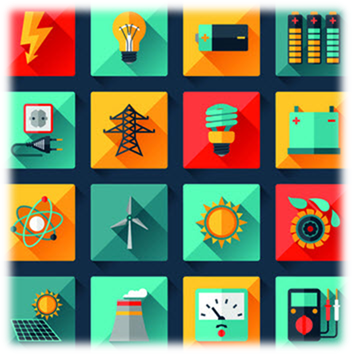
Unit Overview
From lights to iPhones to
microwaves, our everyday lives are made more convenient with the use of
electricity. Electrical energy moves charged particles through wires to power
countless devices. In this unit you will explore the fundamental concepts of
electricity and electrical circuits.
Activity: Power Up
Spend one entire day
making notes of all the ways you use electricity. Then reflect on how your life
would be different without electricity. Record this information for question #1
in the assessment portion of the unit.
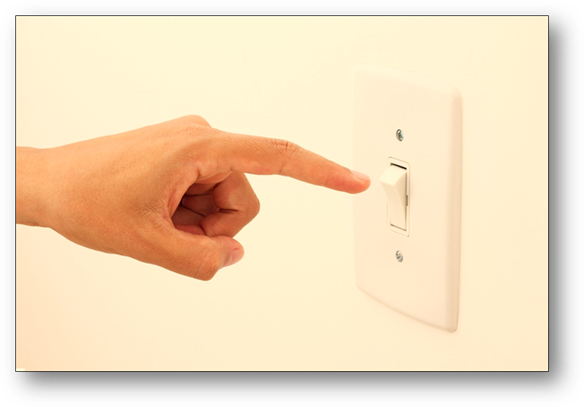
What is Electricity?
All matter is made up of atoms
as the most basic unit. Atoms have three types of subatomic particles—protons,
neutrons, and electrons. The protons (positive charge) and neutrons (neutral
charge) are found in the nucleus, or the very center of the atom. Electrons
(negative charge) are very tiny particles that orbit around the outside of the
nucleus. The negative charge of the electrons is attracted to the positive
charge of the protons, which keeps the electrons in orbit. Sometimes, due to
their high energy, electrons move from one atom to another. When that happens,
electricity is created.
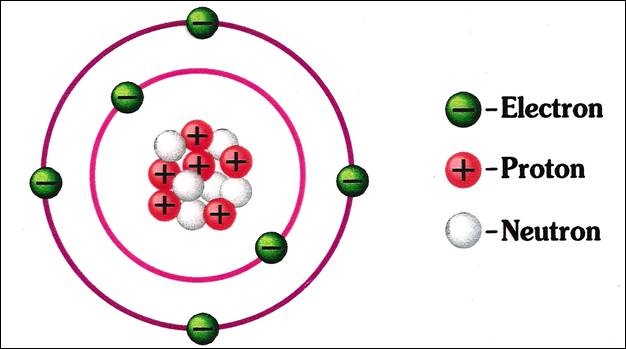
How Electricity Works
Current electricity is when electrons are freely flowing end-to-end
through a wire.
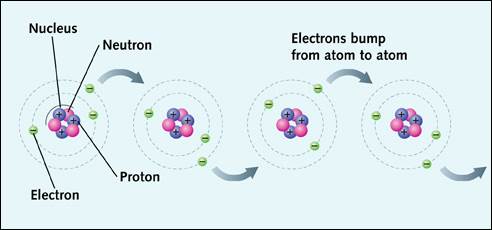
In order to better
understand electrical terms and quantities, let’s take a look as it applies to
circuits.
A circuit is a closed loop through
which electrons are able to travel. A circuit has two requirements—a closed
conducting path, and a supply of energy.
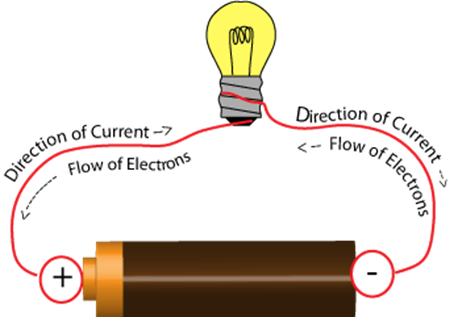
In this simple circuit,
the battery provides chemical energy which is transformed to electrical energy
to move along the wires. The battery’s electrical potential is measured in
volts (V). The voltage is a measure of energy carried through a circuit. The
electrons flow in one direction, which moves away from the negative battery
terminal and toward the positive terminal. The current, on the other hand,
flows from positive to negative. Electric current is the rate at
which electric charge passes a point in a circuit. Current is measured in
amperes, or amps (A).
Matter can be classified
in three possible ways when it comes to its ability to transfer electrical
energy. Conductors have an excellent ability to let electricity pass
through them. Semiconductors allow energy to pass through under certain
conditions. Insulators are materials through which electrical energy cannot
pass. Most metals, such as silver and copper, are good conductors of
electricity. Silicon is a common semiconductor and is used in many electronics.
Wood and glass are examples of insulators.
In a circuit, the
conductor can meet resistance, which is a reduction of the electric current flow
through the circuit. It is measured in ohms. Resistance can be thought of as
friction in electric circuits.
Types of Electrical Circuits
There are two basic types
of circuits. One type is a series circuit and the other type is a parallel
circuit. A series circuit is designed so that an individual charge will
pass consecutively through multiple resistors connected in a row. A parallel
circuit places resistors along individual branch lines, and the charge
will pass through only one branch line going to and from the power source. The
way a circuit is constructed will have an impact on the total current flowing
through it.
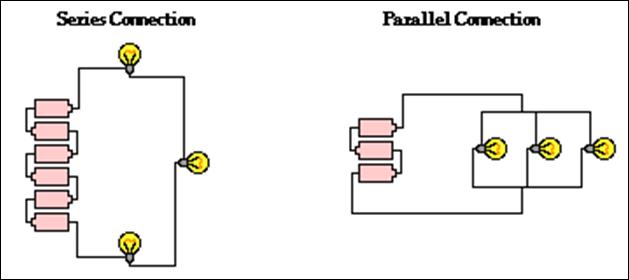
Read on to learn more
about circuits:
http://www.physicsclassroom.com/class/circuits/Lesson-4/Two-Types-of-Connections
Video Clips: Batteries and Circuits
Watch segments 1 and 4
from the following video. Segment 1 provides more information on voltage,
current, and resistance. Segment 4 describes the workings of a parallel
circuit. Complete the guided notes as you watch the video clips.
Basic Electrical Quantities: Current,
Voltage, Power
Read the following article
from Khan Academy. You are required to know the content; however, you do not
need to learn the formulas. Click on the icon below.
Measuring Voltage and Current
There are instruments
which are commonly used to measure voltage and current. A voltmeter is used to
measure voltage in an electrical circuit. Voltmeters have a positive lead and a
negative lead which are connected in parallel within a circuit to the element
you are analyzing. An ammeter is used to measure the circuit’s electric
current. Ammeters must be hooked up in series within the circuit.
Watch the following video
clip to learn more about how voltmeters and ammeters are used to quantify
voltage and current.
Quizlet Vocabulary
 Now, answer
questions 1-19.
Now, answer
questions 1-19.
